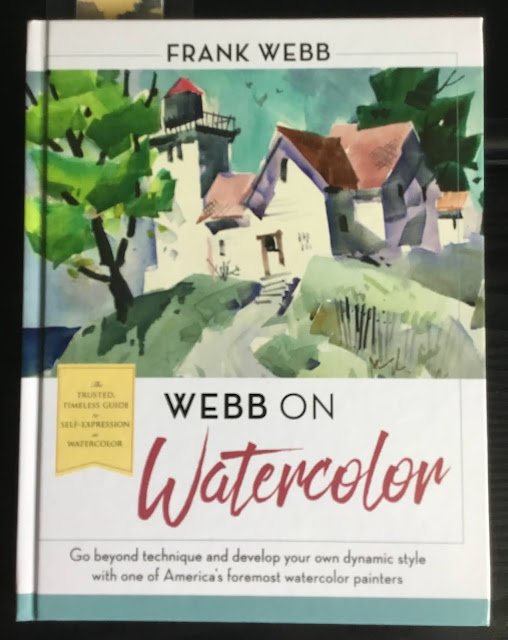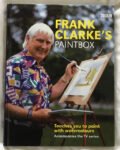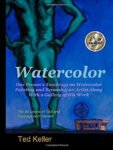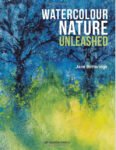If you’ve not discovered the camel camel camel website before, you should really check it out. It monitors the prices on Amazon of whatever CDs and books you tell it to. You can even tell it a target price for each item on Amazon and a target price through third party sellers. I have my eye on over 30 art books and they’re being constantly monitored. I’m telling you this because I got an email the other day telling me this 160 page hardback was down to about £11.50 on Amazon. I had to buy it.
It’s my second Frank Webb book. The first,
Strengthen Your Paintings With Dynamic Composition, was absolutely packed from end to end with useful tips and ideas. Every word in that book was useful. This one isn’t so intense. It’s more laid back, with some arty farty passages in places about art and creativity. “What makes the kite fly? The wind? No, not the wind, for if you cut the string, down it comes. Is it the string? No, the string does not lift the kite….”. It did make me both roll my eyes and chuckle in places.
But if you take the time to read through the book, there is a lot of useful stuff in there. On the face of it, some of it is well trodden ground, with chapters on colour, values, elements, etc but it’s always good to be reminded of compositional ideas and to be talked through more examples of applying them in practice. And there’s still a lot in those chapters that I’d never thought about before.
Some of the more interesting bits included:
– in a discussion about reserving whites, the idea that sometimes the thing you’re painting doesn’t have much white, so you may need to be inventive and create some white areas
– the distinction between two ways of approaching the value plan. There’s chiaroscuro, which is all about observing and copying values in the hope that the shape emerges (something I do with marker portraits) and there’s modelling, which is all about thinking about planes and surfaces and allocating values by thinking rather than looking
– a short chapter on figure painting that was unexpected but had some interesting ideas that I’d not seen in my Charles Reid book
The big highlight for me, though, was the Encounter chapter. It described five different stylistic approaches. There was calligraphic painting and layering (aka glazing) – before I read the book I thought these were the same thing and that they were Frank’s only style. He also described wet into wet (OK, that’s not new to me). But then there were two more styles: patch against patch and push-pull. The four pages devoted to these styles were the best bit of the book and would have made great subjects for another two books. I will be trying both of these out at some point.
And it’s also worth mentioning that this book has a constant theme going through it like an underpainting. It’s that the artist plays the role of the director in a painting. It’s not about reproducing what’s in front of you – it’s about coming up with artwork. When something like this is subtly drilled into you throughout a book, it starts to stick and I think I might have got the message now. My paintings are going to be more carefully thought through in future, not just with value sketches but also thinking about elements and contract/dominance/harmony/etc.
I thought before writing this up that it was a close call between three and four palettes but I’ve talked myself into four.
🎨🎨🎨🎨









Leave a Reply